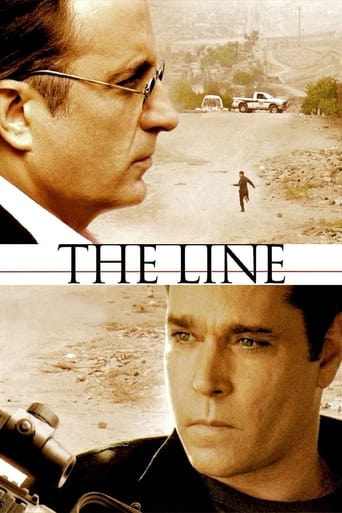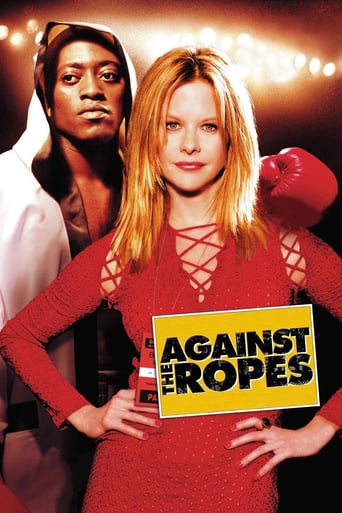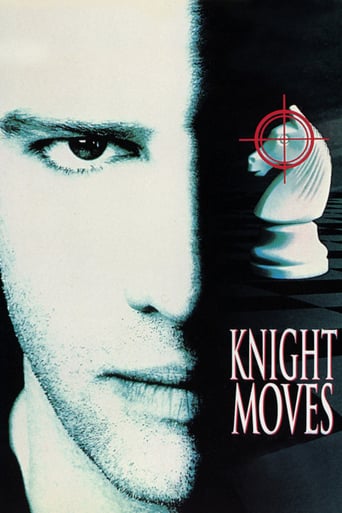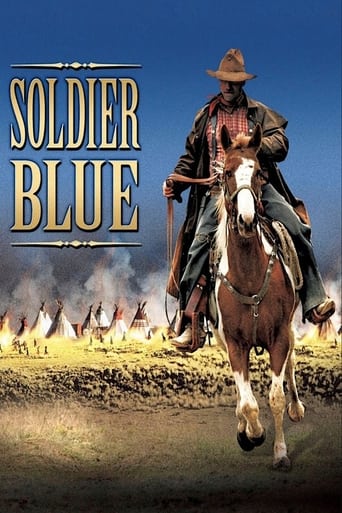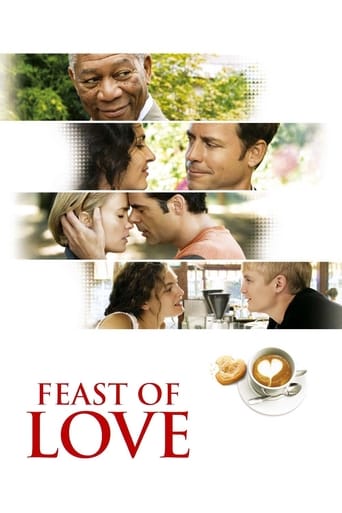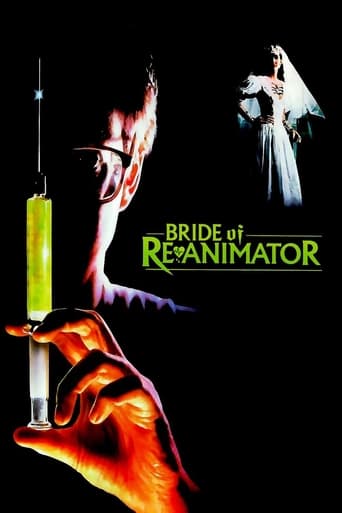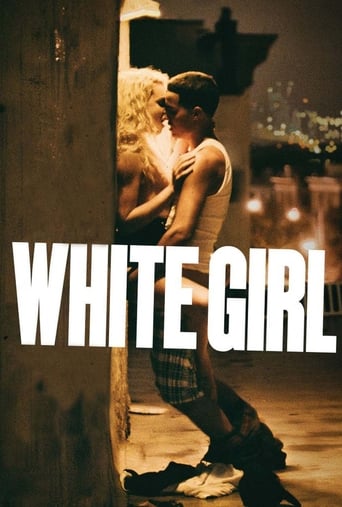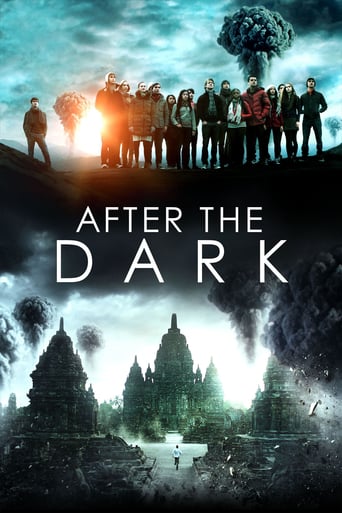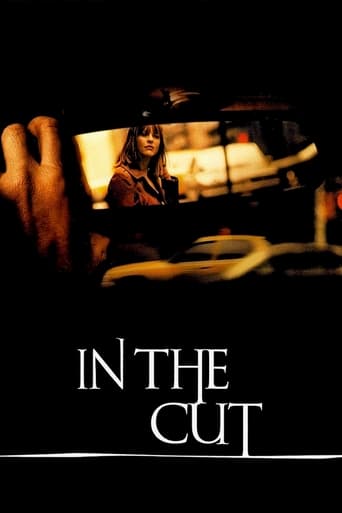


In the Cut
Following the gruesome murder of a young woman in her neighborhood, an English teacher living in New York City — as if to test the limits of her own safety —propels herself into an impossibly risky sexual liaison with a police detective.
-
- Cast:
- Meg Ryan , Mark Ruffalo , Jennifer Jason Leigh , Nick Damici , Sharrieff Pugh , Heather Litteer , Kevin Bacon


Similar titles
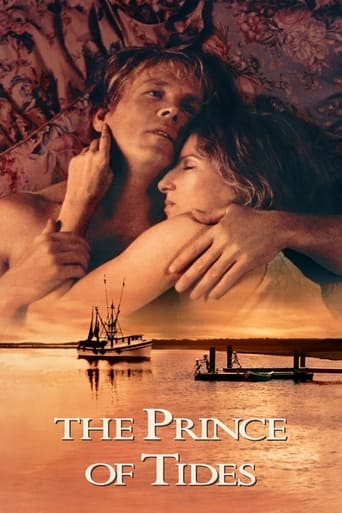
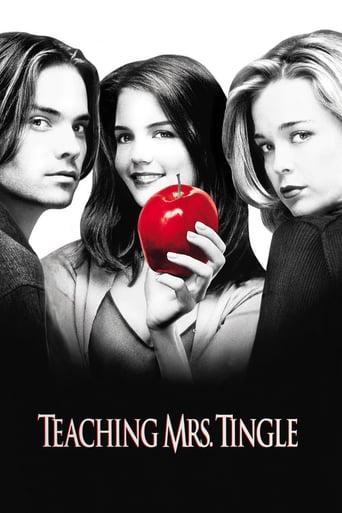
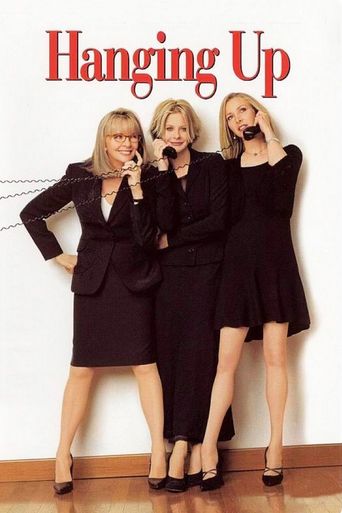

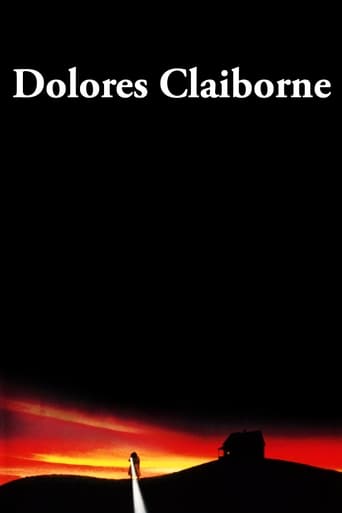


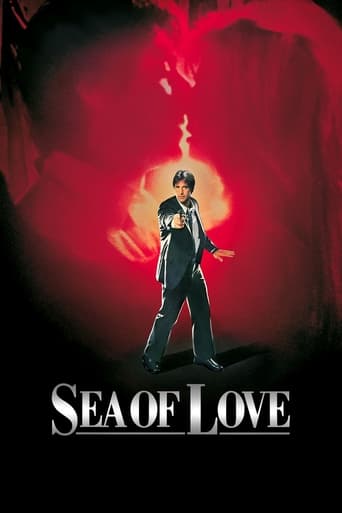
Reviews
I like the storyline of this show,it attract me so much
To me, this movie is perfection.
Best movie ever!
By the time the dramatic fireworks start popping off, each one feels earned.
Read some of the titles of the dunce reviewers who gave this gem a 1 - same morons that gave The Shawshank Redemption 10's. They're ridiculous so don't read the morons because it will kill off some brain cells or at least leave you sad. Just saw the movie on HBO GO - where was I when this came out? Anyway,, beautiful film by Jane Campion. Wonderfully cast, Meg Ryan shines - Jennifer Jason Leigh is great as always - Mark Ruffalo fantastic as a NYC homicide detective. The film has it all - just watch it. Suspense, sexual dynamics between men and women, humor, poetry. I loved this film. Straight 8 from beginning to end.
The acting is fine. So are the directing and cinematography. But who cares? The story is so full of holes that it's hard to believe Campion wasted her time on such junk. A creepy ex-boyfriend and a student who happens to be fixated on serial murders? Nah, they're just filler, a couple of obvious suspects, though Meg Ryan's character isn't even bright enough to suspect them as she sleepwalks through her life. No, the killer is there in the background, waiting for the big reveal in the last five minutes. The plot stinks to high heaven.Roger Ebert's review sums it up nicely: http://www.rogerebert.com/reviews/in-the-cut-2003
"Men love death. In everything they make, they hollow out a central place for death, let its rancid smell contaminate every dimension of whatever still survives. Men especially love murder. In art they celebrate it, and in life they commit it. They embrace murder as if life without it would be devoid of passion, meaning, and action, as if murder were solace." - Andrea Dworkin Jane Campion's "In the Cut" stars Meg Ryan as Frannie, a frumpy English teacher who believes that "all slang masks sex" and "all language masks violence". Having grown calloused after a long line of failed relationships, Frannie spends the film's first act seemingly drawn to death and perhaps her own demise."Cut" then turns into a sordid fairy tale, Frannie stepping into a darkened basement in which she sees a serial killer receiving oral sex from a woman who will later be murdered. From here on the film uses a familiar thriller narrative as a springboard for themes which have interested Campion throughout her career. And so the film portrays a world of hyper-masculine aggression, confused female psyches - where eroticism and masochism seem to occupy the same befuddled head-space - and an overwhelming sense of all-pervasive violence directed toward women. The film's title refers both to police/crime slang (a secluded, hidden location), and a euphemism for the vagina.Because a spate of murders have been committed in her neighbourhood, Frannie quickly finds herself in the company of Detective Malloy (Mark Ruffalo). They begin to develop a relationship. Though she suspects that Malloy might be a serial killer, Frannie remains attracted to him. Years of jaded isolation are overwhelmed by yearnings for danger, passion and empowerment, which Malloy seems to supply. Frannie doesn't necessarily love Malloy; she enjoys the violence he leaks into her life.The film's later portions (which include deliberately kitschy flashbacks) play like a meditation on the romantic myths underlying societies, and the unexamined misogyny of slasher/horror films. But the film goes beyond the shattering of idealised love, romantic illusions and the conditioned expectations of women (which nobody really believes today, whilst simultaneously acting as though they wholeheartedly do), and seems to instead portray the "woman's" desire to claim for herself a part of the world's "masculinist violence". This is best epitomised by a scene in which a murder-suspect takes Frannie into the woods, a place where she would traditionally be executed but is instead trained to use a gun.Familiar notions of femininity, beauty and romance are undercut throughout the film: the men are barbarous oafs (the film's serial killer is fuelled by castration anxieties), the woman are grimy and unglamourous, all the film's relationships are rooted in violence (even when at their most tender or heartfelt), death permeates everything, it seems impossible to discern between freedom and slavery, law and crime, and all Campion's women are potential corpses whilst all men may be killers at worse, racist/foul/sexist/promiscuous at best. The film itself seems to exist in a surreal dream-space of shadowy, sleazy sets (many phallic shapes, lighthouses etc) where poetry (corresponding to the feelings of characters) litter walls and strippers seem to forever live behind the woodwork. Objects familiar in courtship fantasies (flowers, hearts, wedding rings, ice rings, baby carriages, bracelets), traditionally romantic situations and/or locales, as well as objects typically linked to female domesticity (washing-machines, here stuffed with corpses) are likewise scuffed up.Nevertheless, the film isn't all pessimistic. Malloy may be the antithesis of chivalry and romance (the root of the word "romance" is itself "idealised" or "non existent"), but he is honest, caring and tender with Frannie (his sex acts with her stress his subordination to her needs), and there is warmth in the unglamourous but tender way in which he bathes her. It also becomes increasingly clear that Frannie is incredibly messed up, and that the "aesthetic" of the film is perhaps an articulation of her own warped, damaged world view. It isn't that there isn't incredible violence always bearing down on Frannie – there is, and she's justifiably wounded/petrified – but that she won't allow herself to see anything but the grime.Much of the film is preoccupied with a schematic confrontation between "what is male" (violence, Thanatos, sadism, dispassionate, penetrate, in, hate) and "what is female" (sex, Eros, masochism, warmth, penetrated, the cut, love). Campion blurs the line between these contrasts, though (What is violent? What is sexual? What is masculine? What is feminine?), such that they all eventually overlap and fill the same space. Consider a pair of scenes which mirror a public attack on Frannie with a private sex act between Malloy and Frannie. In the latter, Malloy assumes the role of the attacker, but though Frannie senses danger, she is unable to turn away from him; a kind of willing riff on the first scene's violation. Similarly, all violence in the film is followed by masturbation, coupling, flirting, phone sex etc. The overlapping of sex, romance and violence permeates the film's dialogue as well, which is heavy with both overt linkages and subtler double-entendres. The film's title likewise signifies both something violent, "a cut", and of course a safe, embalming sex organ. Elsewhere, Frannie's first kiss follows an act of gun-play.This schema infects the aesthetic tone of the film, which is either "soft", "gentle" and "feminine", with muted lighting, blurred frames, soft edges and dreamy camera work, or "harsh", "jagged", "masculine" and "violent", with nauseating colours, abrupt cuts, expressionistic angles and blunt images. Cinematographer Dion Beebe, who did great work on "Collateral" and "Miami Vice", lends the film a gorgeous mood. The film's final act is weak, but palatable atmosphere and an odd but affecting romance make up for this.8.5/10 – See Director's Cut only. Good, similar films by women: Breillat's "Romance", Claire Denis' "Trouble Every Day", Marleen Gorris' "Broken Mirrors". Worth two viewings.
Jane Campion clearly can't make it. The film doesn't work at all. At first, we have the framing, witch is very tiring, with the continuous close - ups and the hand held camera only makes things worse. Blurring things or dimming the lights does not, I repeat does not creates atmosphere, it only shows luck of creativeness together with a very old fashion approach in film making. Showing us again and again every detail of the faces of the actors does not engage us more, it only makes us want to zoom out ourselves to see wtf is going on. The music is so academic that it doesn't exist. Worst of all: The dialogs. The film crawls all the way from the beginning to the bitter end and the dialogs are drugging it the other way. What can I say? Together with Holy Smoke, a film that ruined the talented Harvey Keitel and Kate Winslet, (a tragedy really), In The Cut is so pointless that makes you wonder, was she really thinking making them? I wouldn't consider watching anything else from her. I gave her a four, for it's obvious that she tried, but she clearly failed. She doesn't have it. Sorry Jane.

